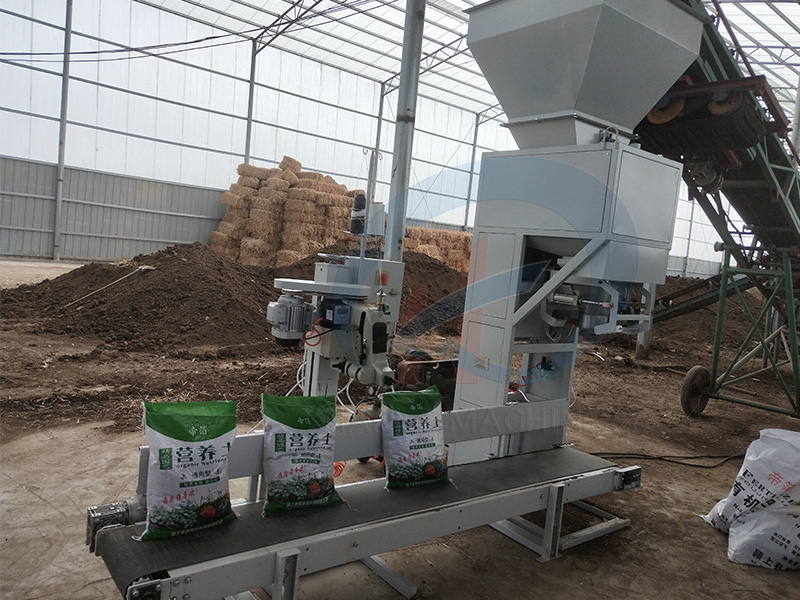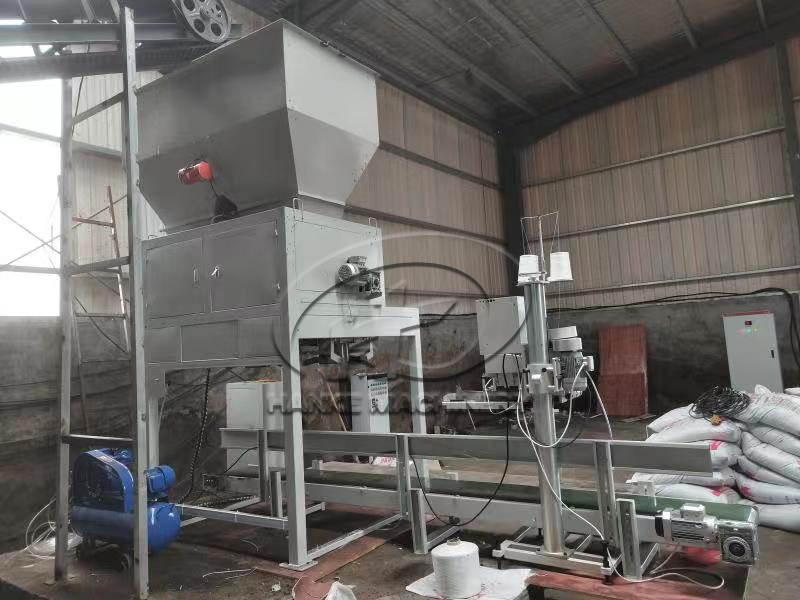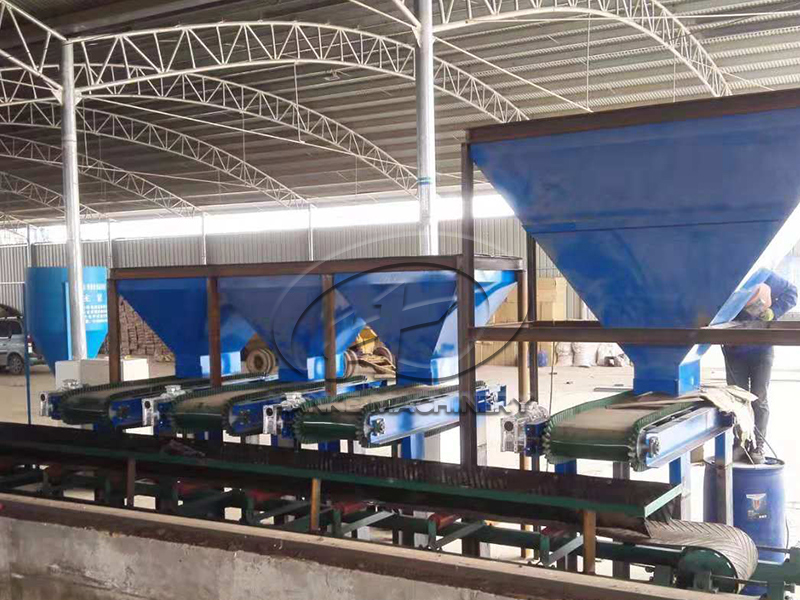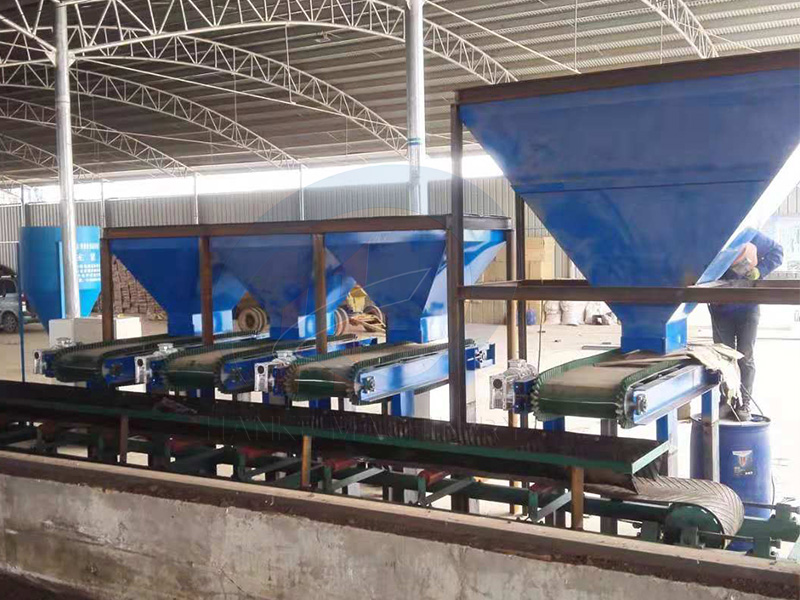 HOME > News > Industry News > What factors should be considered when purchasing a granular organic fertilizer packaging machine?
HOME > News > Industry News > What factors should be considered when purchasing a granular organic fertilizer packaging machine? Update time : 2025-09-28 Publisher:Zhengzhou Hanke Machinery
Purchasing a granular organic fertilizer packaging machine is a crucial decision that affects production efficiency, packaging quality, and long-term costs. It requires a comprehensive consideration of one's own production needs, material characteristics, and equipment compatibility. The core focus should be on the following eight factors:
I. Clarify your own production needs: Match the "capacity and specifications" of the equipment.
Production demand is the core prerequisite for model selection. Two key indicators need to be clarified first:
1、Packaging speed (production capacity)
Calculate the packaging efficiency that the equipment needs to meet based on the total daily/hourly output (such as "500 bags need to be packaged per hour" or "20 tons of materials need to be packaged per day").
Small production capacity (such as small workshops, daily output < 50 tons): Semi-automatic machines (speed 10-30 bags/minute) can be selected, which offer better cost performance.
For large production capacity (such as large-scale factories with daily output > 100 tons), fully automatic/multi-station machines (with a speed of 30-80 bags per minute) must be selected to avoid the equipment becoming a production bottleneck.
2、Packaging Specifications (Bag Type and Weight)
The common packaging for granular organic fertilizer is 25kg/50kg woven bags. There are also a few small packages of 10kg or 1000kg ton bags. It is necessary to confirm whether the measurement range of the equipment matches.
Conventional packaging (10-50kg): Most equipment can be covered, with a focus on measurement accuracy.
Special specifications (such as <5kg small bags or >100kg bulk bags): Specialized machines (such as "small bag bag-in-box packaging machine" or "bulk bag quantitative packaging machine") should be selected to avoid poor compatibility with general-purpose machines.
II.adapt to material characteristics: Avoid "material jamming and wear" issues
The physical properties of granular organic fertilizer, such as particle size, hardness and moisture content, directly affect the stability and lifespan of the equipment, and thus require close attention.
1.Particle size: If the particles are not uniform (such as containing a small amount of powder or lumps), it is necessary to select a "clog-preventing discharge structure" (such as a widened screw discharge port, or a vibration arch-breaking device) to avoid material blockage; if the particles are fine (<2mm), it is necessary to confirm whether the equipment has a "dust overflow prevention" design (such as a sealed hopper, or a negative pressure dust removal interface).
2.Material moisture: If the organic fertilizer has a high moisture content (>15%), the particles are prone to sticking together. It is necessary to choose an "anti-sticking discharge component" (such as a stainless steel anti-sticking screw or a heated discharge pipe) to prevent material adhesion and ensure accurate measurement.
3.Particle hardness: If the particles are relatively hard (such as sintered particles), attention should be paid to the material of the equipment parts that come into contact with the material (such as choosing 304 stainless steel or wear-resistant alloys to avoid rapid wear of ordinary carbon steel).

III. Core Performance: Measurement Accuracy and Sealing Quality
The core functions of a packaging machine are "accurate quantity bagging + secure sealing", and these two indicators directly affect product compliance and customer trust.
1.Measurement accuracy
Organic fertilizer is a type of agricultural production material. The weight deviation should comply with national standards (usually within ±0.5%). When selecting, it is necessary to confirm:
Is the equipment equipped with high-precision weighing sensors (for example, when the range is 50kg, the accuracy is at the 0.1g level)?
Is there a "dynamic compensation technology" (such as dual-speed feeding with fast addition and slow addition to avoid over-shooting errors during fast feeding)?
Actual test: Require the manufacturer to conduct a trial run with genuine organic fertilizer granules, continuously packaging 10 to 20 bags, and calculate whether the weight deviation remains within the allowable range.
2.Sealing quality
The tightness of the seal directly affects the moisture-proof performance of the product and transportation loss. The sealing method should be selected based on the material of the packaging bag.
Woven bags / kraft paper bags: You can choose "thread-sealed opening" (high strength, suitable for heavy packaging) or "heat-sealed opening" (fast speed, please confirm whether the heat sealing temperature is adjustable to avoid burning through the bag).
Composite film bags (such as PE + woven film): "Hot seal + cold press dual-station sealing" should be selected to ensure that the seal is leak-proof and not easily torn.
IV. Degree of Automation: Balancing "Labor Costs and Budget"
The degree of automation determines the reliance on manual labor and long-term operating costs. It is necessary to make a choice based on production capacity and budget.
Type | Degree of Automation | Manual Requirements | Applicable Scenarios | Core Advantages
Semi-automatic machine | Requires manual bag loading and hanging, with the equipment automatically measuring and filling | 1-2 people per machine | Suitable for small production capacity and limited budget | Low price (10,000 - 30,000 yuan), easy to operate
Fully automatic machine | Automatic bag loading, metering, filling, sealing and output | 0.5 person per machine (only for assistance) | Medium to high production capacity, efficiency pursuit | High efficiency, reduced human error
Fully automatic bag-in-feeder machine | Built-in bag storage, automatic bag retrieval, opening and sealing | 0 person / unit (regular bag replenishment) | High production capacity, uniform bag type (such as pre-made bags) | Strong stability, beautiful packaging
If the labor cost in the factory is high (such as in coastal areas), even if the initial budget is slightly tight, it is recommended to prioritize the fully automatic machine. In the long term, it can save labor costs.
V. Equipment Materials and Durability: Avoid "Frequent Repairs"
Granular organic fertilizers may contain a small amount of corrosive components (such as organic acids produced during the composting process), and the parts that come into long-term contact with the materials are prone to wear and tear. Attention should be paid to the material selection.
Contact material components: 304 stainless steel must be selected (corrosion-resistant and easy to clean), and avoid ordinary carbon steel (prone to rust and contaminate materials).
Frame and enclosure: Available in carbon steel with plastic coating (low cost) or stainless steel (suitable for humid environments, such as rainy areas in the south).
Key vulnerable parts: such as spiral blades, conveyor belts, and sealing strips, need to be confirmed whether they are universal parts (easy to replace later and low cost), or whether the manufacturer provides long-term spare parts supply.
VI. After-sales Service: Ensuring "Long-term Stable Operation"
Packaging machines fall under industrial equipment, and subsequent maintenance and upkeep are of vital importance. Therefore, it is essential to closely examine the service capabilities of the manufacturer.
Warranty period: Prefer manufacturers with a warranty period of ≥ 1 year. The warranty period for core components (such as load cells and motors) should be ≥ 2 years.
Installation and Training: Is free on-site installation, commissioning, and training for operators (such as equipment operation, daily maintenance, and simple troubleshooting) provided?
After-sales response speed: Is there a 24-hour after-sales service hotline? Are there any service outlets nearby? (In case of equipment failure, can on-site maintenance be provided within 48 hours to avoid prolonged production downtime?)
Spares supply: Can spare parts (such as screws and sealing knives) be provided in a timely manner to prevent equipment from being idle due to lack of parts?
VII. Brand and Reputation: Reducing "Selection Risk"
There are numerous packaging machine brands in the market, with varying qualities. It is advisable to give priority to manufacturers with rich industry experience and a good reputation to avoid "small workshop equipment" (which offers no quality guarantee and no after-sales service).
Assessment method:
Check the establishment time of the manufacturer (preferably choose those established for at least 5 years, with mature technological accumulation).
Request customer cases (such as whether there are usage cases in the same industry (organic fertilizer factory), and you can consult the customer's usage experience by phone);
On-site inspection (if the budget is high, it is recommended to visit the manufacturer's production line in person to confirm whether they have independent research and development and production capabilities, rather than just "assembly and processing").
VIII. Budget and Cost-effectiveness: Don't Blindly "Choose Expensive or Cheap"
Budget is an important constraint in model selection, but two extremes should be avoided:
Don't blindly choose the "cheapest": Some low-priced semi-automatic machines (<10,000) may use inferior sensors or motors, with poor measurement accuracy, prone to failure, and high subsequent maintenance costs, which is actually not cost-effective.
Don't blindly choose the "most expensive": If you only need to package regular 25kg woven bags, there is no need to select high-end machines with additional functions such as "intelligent visual inspection" and "multi-specification compatibility" (with a premium of over 30%). Just choose according to your needs.
Suggestion: List the core requirements (such as "50kg woven bags, 300 bags per hour, accuracy ±0.3%"), and have 3-5 manufacturers provide targeted quotations. Compare "equipment configuration (material, sensor brand) + service + price", and choose the one with the best cost performance.
Summary: Selection Decision Process
Clarify core requirements: production capacity (bags/minute) + packaging specification (kg/bag) + bag type;
Screen and select suitable models: Determine the degree of automation (semi-automatic / fully automatic) and material requirements based on needs.
Examine the manufacturer's strength: cases, after-sales service, and warranty.
Trial operation verification: Test the measurement accuracy, sealing quality and speed with real materials.
Compare the budget with the cost performance: Determine the final selection.
By following the above steps, the possibility of "selecting the wrong equipment" can be minimized, ensuring that the packaging machine meets production requirements and operates stably for a long time.

see details +

see details +

see details +

see details +

 Tel:+86 17319777703
Tel:+86 17319777703
 E-mail:hkautomaticpack@foxmail.com
E-mail:hkautomaticpack@foxmail.com
 Address:Xingyang City, Zhengzhou City, Henan Province.
Address:Xingyang City, Zhengzhou City, Henan Province.
Privacy Policy Copyright © Zhengzhou Hanke Machinery Equipment Co., Ltd Co., Ltd.